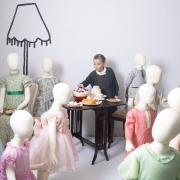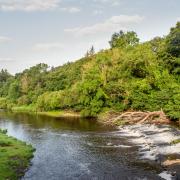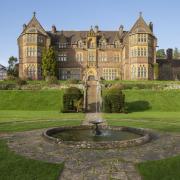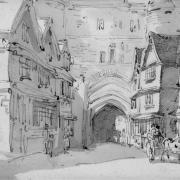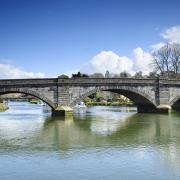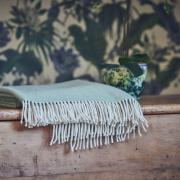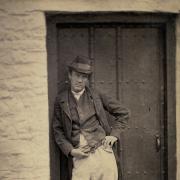The Cridford Inn in Trusham in the Teign Valley is a beautiful old Devon building which dates back to 825 AD and lays claim to being the oldest pub in Devon.
The building was originally a nunnery and farm and was remodelled in the 1300s.
In 1086 it was one of nine smallholdings mentioned in the Domesday Book, and at the time belonged to the Abbey of Buckfast in the manor of Trusham.
During the early 13th to the 15th century it was a farmhouse and there’s a stained glass mullion window that survives from this time. It could be the earliest surviving example of a Medieval domestic window in England.
The building went back to being a farmhouse in more recent times and was known as Cridford Farm, the home of a branch of the Cridford family.
But there is one mystery on which neither the records nor vernacular architects have been able to shed light, possibly until now.
In 1988 workers were stripping back a layer of concrete in what is now the inn’s restaurant and under the concrete they found a cobbled floor with a mosaic set in the middle. The mosaic is made of dolerite and Cornish quartz and in black and white the initials H1 are set with the date 1081.

As this would have been a novel feature for what was, at the time, a yeoman farmer’s dwelling there has been speculation over the years that it could have related to the Harris family who drew rents from the village or their residence, Haldon House.
The true background to the mosaic has always been a mystery, but one which successive owners accepted would probably never be solved.
But last autumn a guest staying at the Inn became intrigued by the mosaic and set about doing more research.
‘It was really fascinating,’ said Paul Moir, who, with his wife Ness, owns the inn. ‘Every morning during his stay we would receive an update on what had been uncovered and I was intrigued by what was being found.
‘Our guest’s research resulted in the theory that the floor mural commemorates a visit by Henry I in 1081 and, when the building was reconstructed between 1300 and 1400, it was retained in the floor as a permanent tribute to the visit.
‘In 1081 Henry would still have been crown prince but by the time the memorial was contracted Henry I and Henry II had been crowned so he would be referred to as Henry I.”
The mosaic is on display beneath a glass cover in the floor of the Inn’s restaurant for customers to see.
thecridfordinn.co.uk.






